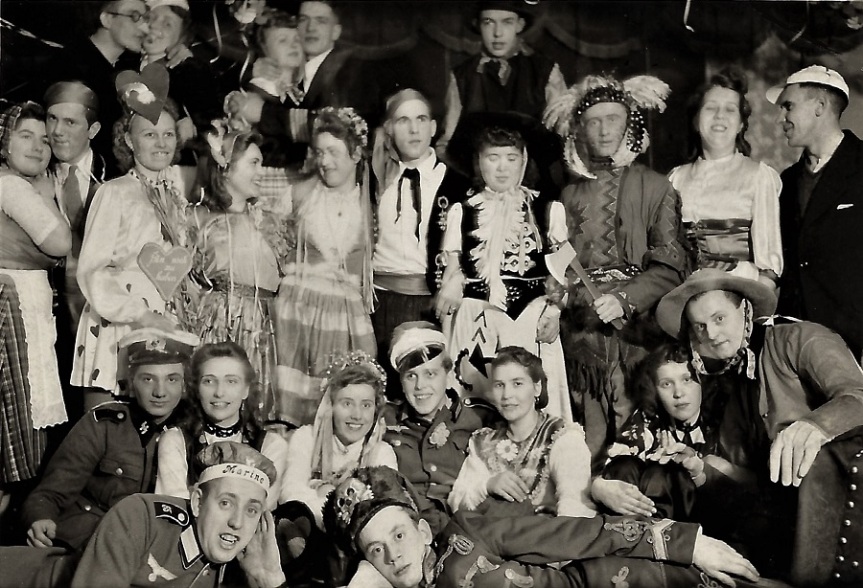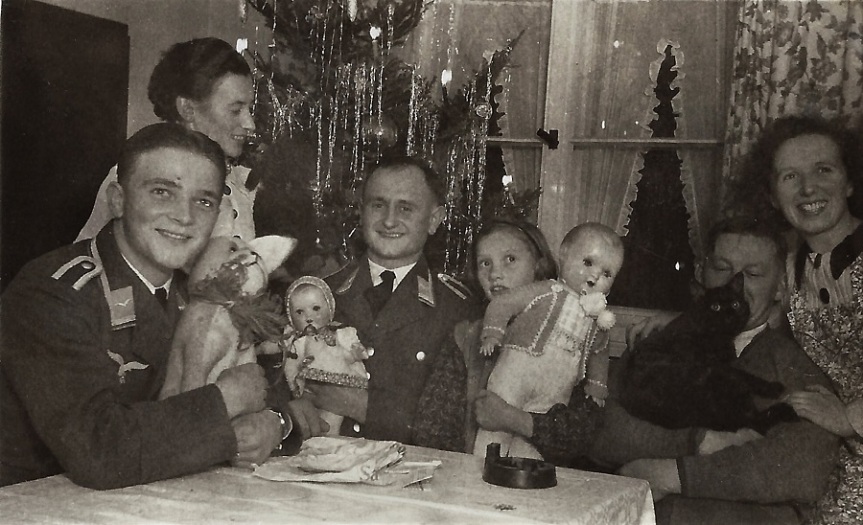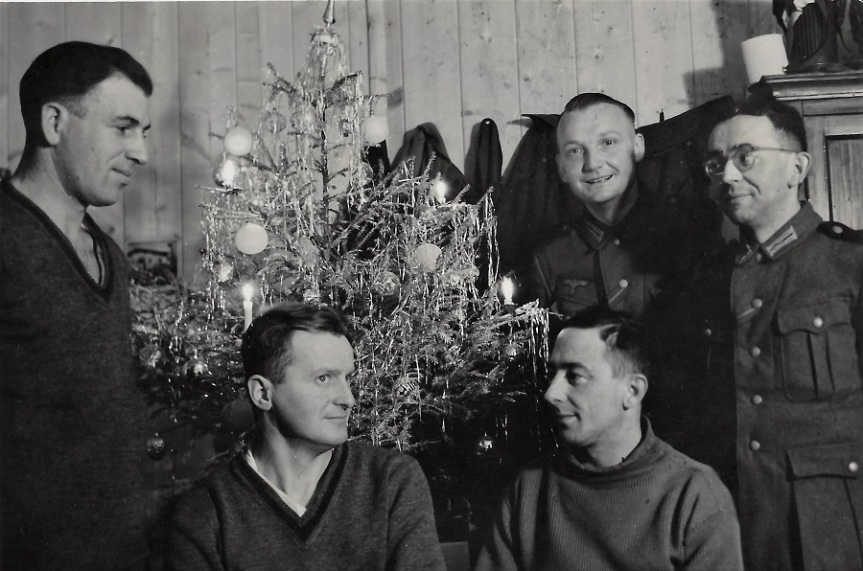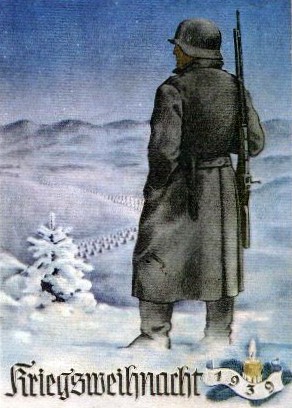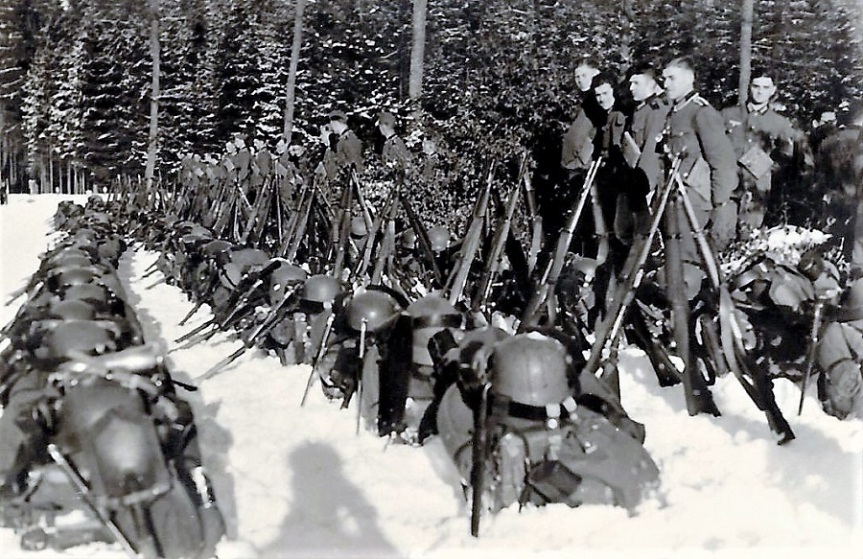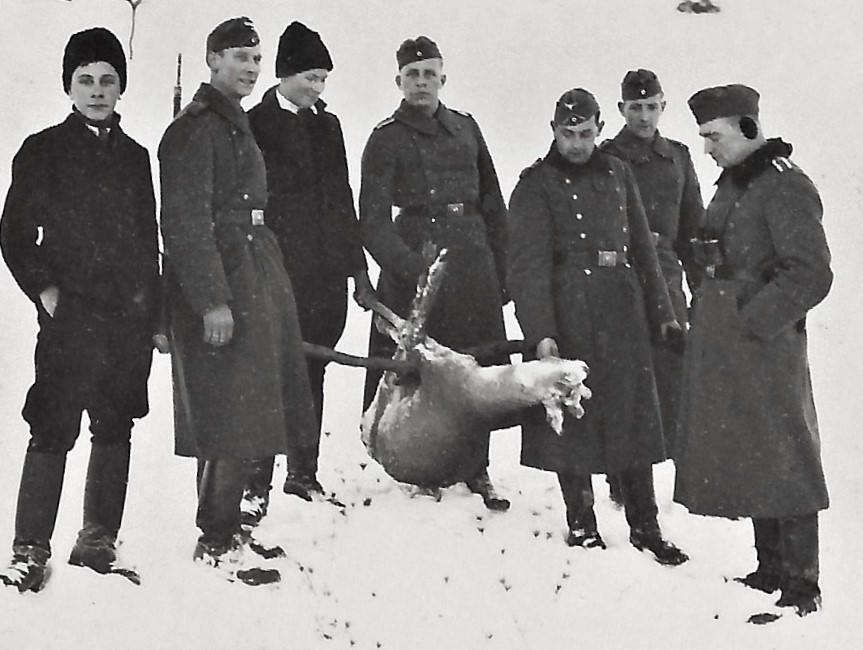Everyone is dressed up and in a festive mood. The war is far off – if it has begun at all – and the young people in the photo have no idea what the coming years will bring. “The future belongs to us” – no, it didn’t. But that is 20/20 hindsight, because we know the result. The party might be in Bremen in northwestern Germany, as the guy in the lower left corner serves in Infanterie-Regiment 65, which was based in Delmenhorst just west of Bremen. That regiment had an interesting career, as it belonged to the 22. Infanteriedivision which saw action in the Netherlands, Crimea, Crete, Greece and Yugoslavia, where it surrendered on 11 May, 1945. The man behind him is in the SS-VT (if before mid-1940, when it changed to Waffen-SS), holding the rank of SS-Rottenführer (lance corporal), and is probably an NCO candidate.
Later, the revelers will pop open a few bottles of sekt (sparkling white wine). Maybe someone of them is still alive today. I wonder if that person remembers that party?
We’ll see what 2020 has in store for us. Things have a tendency to surprise us. Trying to be predictable, my aim is to keep making these posts at a rate of 3-4 updates a week. Next post (which will be the first of 2020) will be the 600th post. I’ll try to make it interesting.


